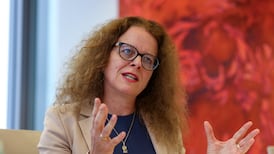A report by Sir George Cox for the UK Treasury in 2005 started with definitions of three key ingredients that could enhance business competitiveness: creativity, innovation, and design.
Creativity, Cox said, is the inception of new ideas, approaches to problems or discovery of new opportunities.
Innovation is the exploitation of these ideas. It transmits new ideas to the market in improved or entirely new products, services, methods and so on.
Design is the thing that binds creativity and innovation together, giving form to new ideas.
So, innovation occurs when a company combines creativity in how it solves a problem with a considered approach to design. Take the example of Maryrose Simpson, one of the finalists for Ireland’s Best Young Entrepreneur.
Like many women, Simpson often found herself without supplies when her period came. What if, she reasoned, everything she needed could arrive at her door at the right time of the month every month? She did customer research and found a real market for the service.
Design matters Her service, MyLadyBug, will launch in early 2015. It will provide everything that the subscriber needs for that time of the month, along with surprise samples of uplifting treats.
What sets MyLadyBug apart from many start-ups is that Simpson not only zeroed in on a real and currently unserviced need, but she put 50 per cent of her effort into design.
“If my USP is convenience for women, then it has to arrive with zero friction, coming in the door on time and without any difficulty or need to visit the post office.”
To that end MyLadyBug is cleverly designed to fit neatly through any letter box. In contrast, Jocks Box, a service that delivers underwear to men, ran into difficulties initially because the box meant the postman could not deliver, and subscribers often had to collect from post offices.
Simpson’s focus on design enabled her cut down on cost too; she used cardboard prototypes to test and reduce the price of postage until she was sure she had a viable margin. By combining creativity in solving a real problem and focusing on design, Simpson has given her start-up a chance at success.
At the other end of the entrepreneurial scale, Liam Casey is CEO of PCH, a vast design, manufacturing and fulfillment system with revenues near $1 billion. His company controls every step of the process by which a product is made and ends up in the hands of a customer: design, selection of materials, manufacture, packaging, dispatch and communication. For him "design is number one" among all these processes.
Aim too low
In the rush to revenue, few start-ups prioritise design to the extent that Simpson has done with MyLadyBug. “Too often,” as Cox said in 2005, “entrepreneurial enterprises aim too low or run out of steam.”
There is a body of research that shows a concerted focus on design yields growth. Almost 10 years ago, the UK Design Council’s national survey of firms found that, while almost half of UK businesses were forced to compete on price, only a fifth of design-focused businesses had to do so.
A further Design Council study in 2006 found that design-focused businesses consistently outperformed the general run of businesses in key stock market indices by 200 per cent over a 10-year period. They published another study of UK businesses in 2007 that found a design-focused businessincreased turnover by an average of £225 for every £100 spent on design.
Perhaps design seems like a superficial thing, the packaging rather than the thing itself. But, as Casey observes, “it is essential to use design thinking to think of the entire experience”.
Even in tech services and products, to which engineering is integral, it is the design that dictates the moment of truth when a customer first interacts with the product. “Tech disappears behind the surface,” says Casey. “When you click for a car on Uber or Hailo, you don’t have to play with the technology for the servers to be available.”
The combination of smart problem-solving and sensitive design can help start-ups of all types. As we enter Ireland's Year of Design 2015, now is the time to get serious about design as a catalyst for growth. Dr Johnny Ryan is executive director of the UCD Innovation Academy












